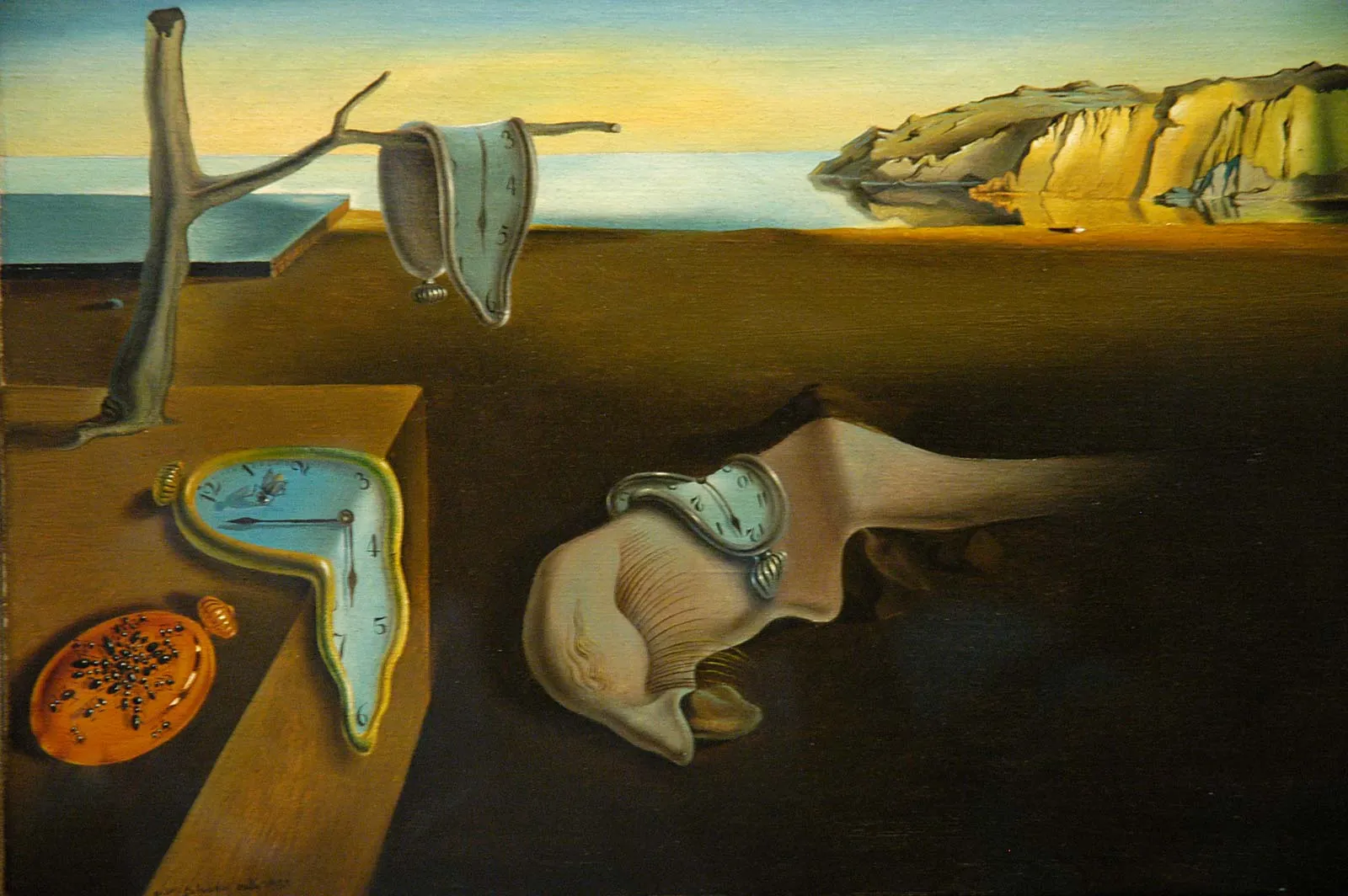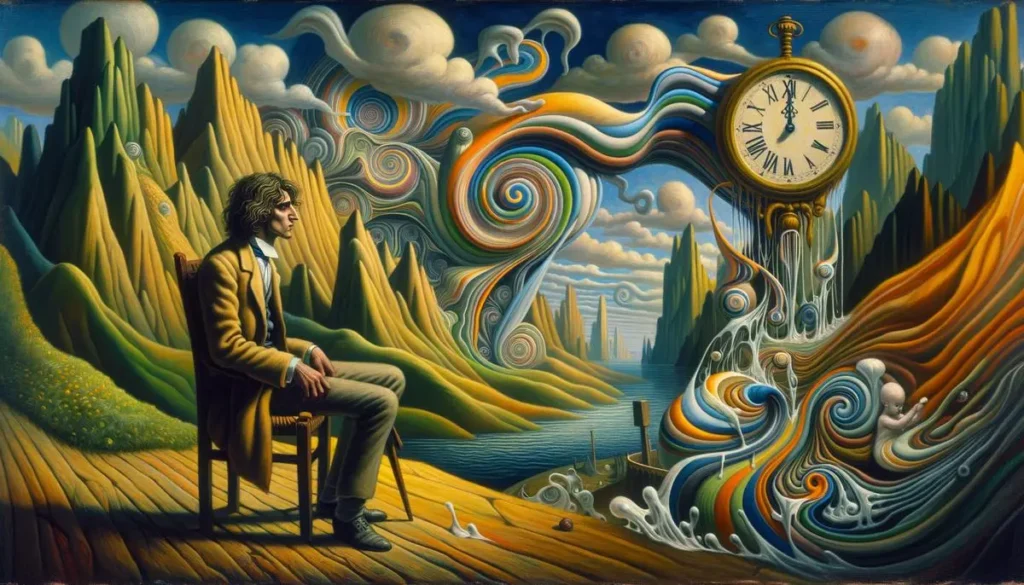Surrealism is an art movement that emerged in the early 20th century, aimed at unlocking the unconscious mind and depicting the world of dreams, fantasy, and the irrational. By rejecting traditional artistic conventions, surrealist artists sought to explore the subconscious, the bizarre, and the unexpected. In this post, we’ll dive into the essence of surrealism, its key artists, and some of its most iconic works that continue to captivate audiences today.
1. The Origins of Surrealism
Surrealism began as a literary movement in the 1920s, largely influenced by the theories of Sigmund Freud, who emphasized the power of the unconscious and dreams. It was officially founded by the French poet André Breton, who wrote the Surrealist Manifesto in 1924, where he outlined the movement’s goals of freedom, creativity, and the exploration of the unconscious mind.
The surrealists were inspired by earlier artistic movements like Dadaism, which rejected traditional aesthetics and celebrated absurdity. However, surrealists took these ideas further by seeking to represent deeper psychological truths through unexpected and dream-like imagery.
2. Key Characteristics of Surrealism
Surrealist art is known for its fantastical, often absurd, imagery and symbolism. Some defining characteristics include:
Dreamlike Imagery
Surrealist works often depict scenes that feel like they’ve come straight out of a dream. This could involve distorted proportions, strange combinations of objects, or bizarre juxtapositions that defy logic.
Automatism
Many surrealists practiced automatism, a technique where the artist created images spontaneously, without conscious thought or premeditated planning. This approach aimed to bypass the rational mind and tap into the subconscious.
Juxtaposition
Surrealists often placed unrelated objects together in unexpected ways to create new meanings. This defied conventional thinking and encouraged the viewer to interpret the artwork from a fresh perspective.
Exploration of the Subconscious
Inspired by Freud’s theories, surrealist artists were interested in exploring the inner workings of the mind, including the unconscious, dreams, and suppressed desires. This exploration often led to strange, mysterious, and highly symbolic imagery.
3. Key Surrealist Artists and Their Works
Salvador Dalí
Salvador Dalí is perhaps the most famous surrealist artist, known for his striking, bizarre imagery that often seems to challenge the laws of physics and logic. Dalí’s works are filled with symbolic content, where everyday objects are twisted or transformed into something uncanny.
Notable Works:
- The Persistence of Memory (1931): Dalí’s most iconic painting, featuring melting clocks draped over trees and objects, explores themes of time, memory, and the fluid nature of reality.
- The Elephants (1948): A painting showcasing bizarre, elongated elephants with spindly legs carrying obelisks, symbolizing weight, fragility, and the surreal nature of existence.
Dalí’s work was not limited to painting; he also worked in sculpture, film, and photography, leaving behind a diverse and influential legacy.
René Magritte
René Magritte’s surrealist paintings are characterized by their use of everyday objects in unusual contexts, often creating paradoxical situations. His works invite viewers to question the nature of reality and the relationship between what is seen and what is imagined.

Notable Works:
- The Treachery of Images (1929): Featuring a pipe with the inscription “Ceci n’est pas une pipe” (This is not a pipe), this painting challenges the viewer’s perception of reality and representation.
- The Son of Man (1964): This self-portrait shows a man with his face obscured by an apple, inviting the viewer to contemplate themes of identity and the limitations of vision.
Magritte’s work emphasizes the power of suggestion and the ambiguity of perception, and his impact on both surrealism and popular culture remains profound.
Max Ernst
Max Ernst, one of the pioneers of surrealism, used a variety of innovative techniques to create his dreamlike, imaginative works. He experimented with collage, frottage (rubbing textures onto paper), and grattage (scraping paint off canvas) to produce highly textured and fantastical imagery.
Notable Works:
- The Elephant Celebes (1921): A surrealist painting that combines mechanical, organic, and mythical forms, evoking both mystery and unease.
- The Robing of the Bride (1940): A more haunting work that merges human and animal forms in a complex narrative, exploring themes of sexuality, transformation, and the unconscious mind.
Ernst’s work defies clear interpretation, but his bold techniques and unsettling imagery have made him a key figure in surrealist art.
Frida Kahlo
Though often associated with Mexican folk art and surrealism, Frida Kahlo’s work is deeply personal and highly symbolic. Her self-portraits often explore themes of pain, identity, and the female experience, blending reality with dream-like elements.
Notable Works:
- The Two Fridas (1939): A powerful self-portrait that depicts two versions of Kahlo sitting side by side, reflecting her struggle with duality and emotional pain.
- The Broken Column (1944): A deeply emotional painting showing Kahlo’s physical and emotional suffering, symbolized by her spine depicted as a shattered column.
While not always considered a traditional surrealist, Kahlo’s ability to blend the personal with the fantastical places her among the most influential artists of the 20th century.
Joan Miró
Joan Miró, a Spanish artist, brought an abstract, childlike quality to surrealism, incorporating vibrant colors, whimsical shapes, and playful figures. His works often evoke a sense of liberation and spontaneity.
Notable Works:
- The Tilled Field (1923-24): A key early work that blends abstraction with surrealist elements, featuring dream-like landscapes and symbolic forms.
- Blue II (1961): A series of abstract shapes and figures painted in blue, reflecting Miró’s experimentation with color and form to express the subconscious mind.
Miró’s work remains influential in both the surrealist movement and modern abstract art.
4. The Legacy of Surrealism
Surrealism had a profound influence on the development of modern art and culture. Its impact can be seen in a variety of fields, including literature, film, fashion, and advertising. Surrealist themes continue to inspire contemporary artists, filmmakers, and designers who explore the subconscious, dream states, and the irrational in their work.
The surrealist movement also paved the way for other avant-garde movements, such as abstract expressionism, pop art, and conceptual art, leaving an indelible mark on the history of art.
5. Conclusion
Surrealism remains one of the most compelling and enigmatic art movements of the 20th century. Through the works of artists like Salvador Dalí, René Magritte, Max Ernst, and Frida Kahlo, surrealism challenged our perception of reality and opened up new ways of understanding the subconscious. Its bold, dreamlike imagery and symbolic content continue to captivate and inspire audiences around the world.
By exploring surrealism, we can engage with the deeper, often hidden realms of the mind and challenge the limitations of the everyday world. Whether you’re an artist, a student of art history, or a casual observer, surrealism offers endless opportunities for interpretation, imagination, and discovery.

